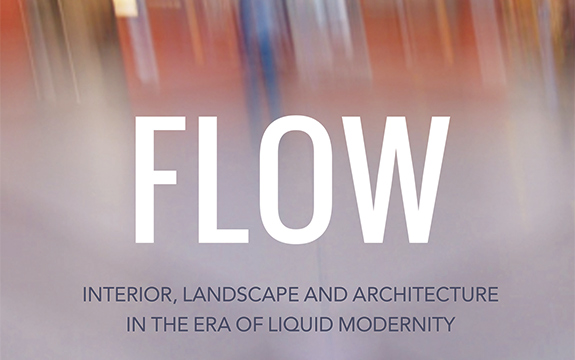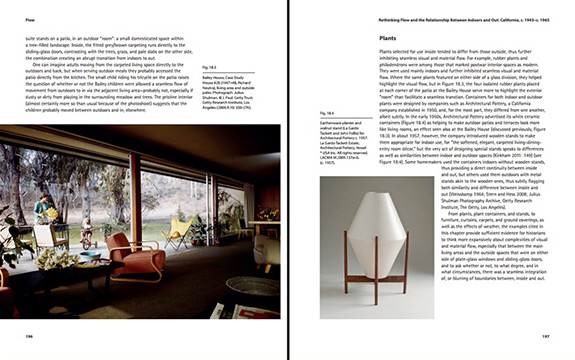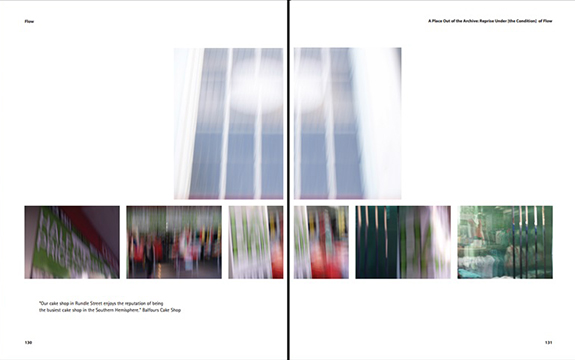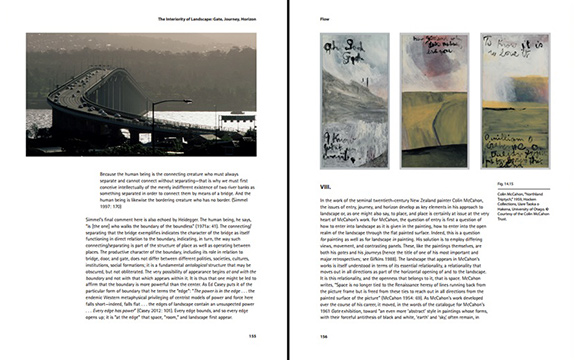Swinburne Architecture Professor co-edits Flow

In Summary
- Architecture Professor Mark Taylor co-edits book about interior and exterior space
- Book discusses relationships between interior and exterior spaces
- Spaces explored on a literal and metaphorical level
Professor of Architecture Mark Taylor’s recent book is the result of a long-term research project with Professor of Design History at Kingston University, Penny Spark and Elisabeth Murdoch Chair of Landscape Architecture at the University of Melbourne, Gini Lee.
Professor Taylor co-edited Flow: Interior, Landscape and Architecture in the Era of Liquid Modernitywith Professor Spark and Professor Lee, along with Associate Professor, Department of Architecture and Landscape, Kingston University, Patricia Brown and researcher, Modern Interiors Research Centre, Kingston University, Patricia Lara-Betancourt as key editor. The editorial team is international and diverse, and offers a transdisciplinary approach to the subject.
“After a conference in London in 2010, Penny, Gini and I had a conversation about the relationship between landscape and the interior and how architecture often gets in the way. I’d written a few papers about this relationship and we were looking for a way to advance a project about it. The idea is to take architecture out of the equation to start with and then bring it back at the end, rather than it foregrounding the work,” says Professor Taylor.
“To support our aim to examine the interior/landscape relationship, we organised a conference held in two parts; the first, held in Kingston in the UK, focused on historical examples of the relationship, while the second, held in Melbourne, examined the same issues from a theoretical perspective,” Professor Taylor explains.
For the Melbourne conference, invitations were extended to practice-based artists and designers to exhibit their work and be included in the publication. The works include video, live streaming, and a performance piece, all of which are detailed in the book.
The book is a range of case studies and papers that explore the interconnectedness of the interior and exterior, on a literal and metaphorical level. It brings together historical, theoretical and practice-based approaches to consider central themes of nature, mobility, continuity and frames.
 Spread from Flow showing Bailey House by Richard Neutra circa 1947-48 with living area and outside patio, image supplied by Bloomsbury
Spread from Flow showing Bailey House by Richard Neutra circa 1947-48 with living area and outside patio, image supplied by Bloomsbury
“The movement towards the interior and exterior as being a single environment comes from the advent of modernism, the opening up of walls and the creation of the ‘picture window’. It’s the idea of a seamless transition between outside and inside. A cultural and societal aspiration, the idea that you transition between the two,” Professor Taylor says.
 Spread from Flow showing photographic representations of interior images from the Adelaide city archive, by Gini Lee and Dolly Daou, image supplied by Bloomsbury
Spread from Flow showing photographic representations of interior images from the Adelaide city archive, by Gini Lee and Dolly Daou, image supplied by Bloomsbury
“The significance of this research is that it positions interior, landscape and architecture in close relationship. It provides a perspective on architecture as an enabling instrument that creates and describes relationships between things. FLOW emphasises the ways in which they are interconnected and the movement between them, whether real or imagined,” says Taylor.
 Spread from Flow showing Tasman Bridge by Leigh Woolley and Northland Triptich by Colin Mc Cahon, image supplied by Bloomsbury
Spread from Flow showing Tasman Bridge by Leigh Woolley and Northland Triptich by Colin Mc Cahon, image supplied by Bloomsbury
“The interior has a strong connection to the exterior and this extends to much bigger ideas and notions of place, and how you enter and navigate through a space.” he says.
Flow: Interior, Landscape and Architecture in the Era of Liquid Modernity is published by Bloomsbury.

